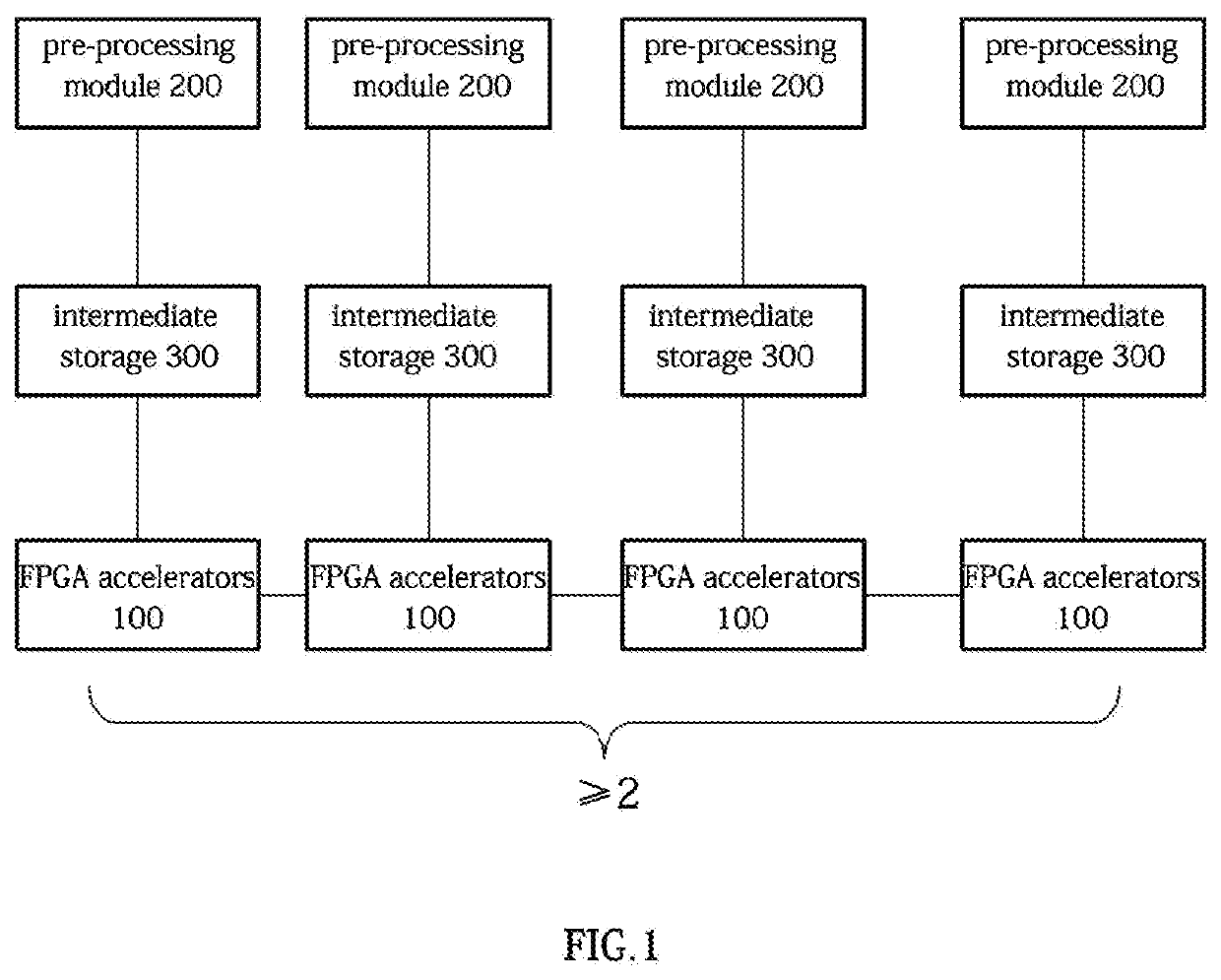Graph processing optimization method based on multi-fpga accelerator interconnection
a multi-fpga accelerator and optimization method technology, applied in the field of graph processing, can solve the problems of reducing the computation-to-communication ratio, introducing unnecessary communication overhead, and degrading the overall performance of the system, so as to reduce the communication overhead, and reduce the computation-to-communication ratio
- Summary
- Abstract
- Description
- Claims
- Application Information
AI Technical Summary
Benefits of technology
Problems solved by technology
Method used
Image
Examples
embodiment 1
[0041]Interval-shard partitioning based on shared memories is not suitable for a multi-FPGA structure in the respect of load balance and scalability for having the following disadvantages. First, frequent switching among memory sub-blocks leads to additional on-chip and / or off-chip data transmission, and increases bandwidth overhead. Second, even the sub-blocks that only contain a few edges have to be loaded to processing units, and this degrades the overall computing performance. Third, the edges whose sources are located in the same sub-interval are sent to same processing unit, while the other processing elements are in idle state, making the resource efficiency of the processing units low.
[0042]The present embodiment provides a graph processing optimization method based on multi-FPGA interconnection. First, the present embodiment provides a low-overhead, high-efficiency graph partitioning method, which maintains load balance between FPGAs with reduced communication overhead. The...
embodiment 2
[0060]The present embodiment provides further improvements to Embodiment 1, and what is identical to its counterpart in the previous embodiment will not be repeated in the following description. Without causing conflict or contradiction, the entire and / or part of preferred modes of other embodiments may be incorporated into the present embodiment as supplements.
[0061]A graph processing optimization system based on multi-FPGA accelerator interconnection is configured to perform graph processing on graph data using a distributed computing system that introduces at least two FPGA accelerators and enables mutual communication between the at least two FPGA accelerators in such a way that relationship between inter-accelerator communication overhead and processing performance inside each said FPGA accelerator is considered in such a way that ultimate load balance between the FPGA accelerators 100 is not pursued.
[0062]The pre-processing module 200 receives the graph data, and is able to pa...
embodiment 3
[0066]The present embodiment provides further improvements to Embodiments 1 and / or 2, and what is identical to its counterpart in the previous embodiment will not be repeated in the following description. Without causing conflict or contradiction, the entire and / or part of preferred modes of other embodiments may be incorporated into the present embodiment as supplements.
[0067]A sub-graph data accessing method for distributed graph processing using multiple FPGA accelerators allows at least two FPGA accelerators to read sub-graph data of corresponding on-chip BRAMs thereof, so that compute units in the FPGA accelerators are able to read sub-graph data of the corresponding on-chip BRAMs thereof without access crossing processing units.
[0068]The method comprises:[0069]storing the portioned sub-graph data into a corresponding intermediate storage 300,[0070]communicatively connecting the FPGA accelerators and the intermediate storage 300, so that the FPGA accelerators 100 are allowed to...
PUM
 Login to View More
Login to View More Abstract
Description
Claims
Application Information
 Login to View More
Login to View More - R&D
- Intellectual Property
- Life Sciences
- Materials
- Tech Scout
- Unparalleled Data Quality
- Higher Quality Content
- 60% Fewer Hallucinations
Browse by: Latest US Patents, China's latest patents, Technical Efficacy Thesaurus, Application Domain, Technology Topic, Popular Technical Reports.
© 2025 PatSnap. All rights reserved.Legal|Privacy policy|Modern Slavery Act Transparency Statement|Sitemap|About US| Contact US: help@patsnap.com



